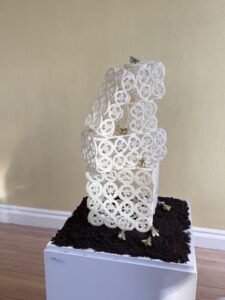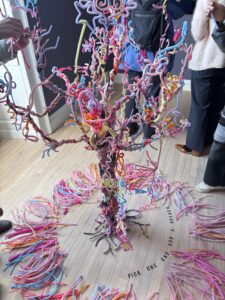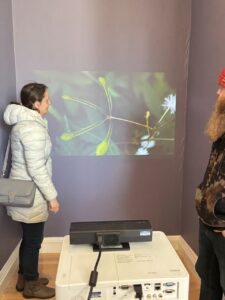This week, I went on a field trip to the Botanical Garden and visited an exhibition of works by CAP students.
I saw a variety of artworks at the exhibition, each with its own characteristics in form, medium, and expression.
Several works impressed me particularly. The first work used plant materials, cucumber pulp, stacked to form an irregular tower shape, which contrasted sharply with the black soil at the bottom, suggesting the symbiotic relationship between nature and artificial structures.

The second work is a “tree” made of colorful twisted hoses, with branches growing in an intertwined pattern. The audience can participate in the creation by selecting materials on the ground and adding them to the tree, making it constantly changing. This interactivity not only blurs the boundary between the artist and the audience but also emphasizes the possibility of the exhibition as an open process.

The third work uses an interactive device to simulate the contraction of the leaves of Mimosa pudica when touched. The work not only enhances interactivity but also explores the relationship between humans and the environment through the sensitive characteristics of Mimosa pudica, showing the reaction of organisms to external stimuli.

These works made me realize that when selecting works for exhibition, we should not only focus on the static presentation of the artworks but also consider how they interact with the audience and how they can inspire new perceptual experiences. Interactivity, material selection, and audience participation all affect the meaning of the works. In addition, these works cleverly combine natural elements, which makes me think about how the exhibition can establish a closer connection with the environment in terms of space design and theme planning.
Week 6 | Fieldwork at Royal Botanic Gardens / Jiaying Lyu / Curating (2024-2025)[SEM2] by is licensed under a

